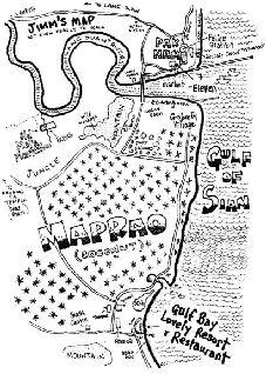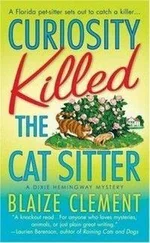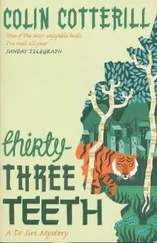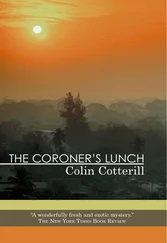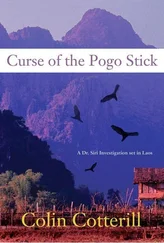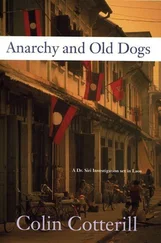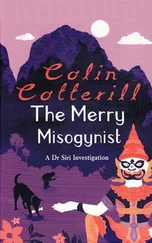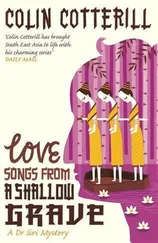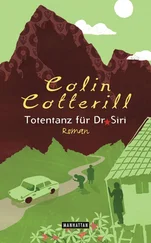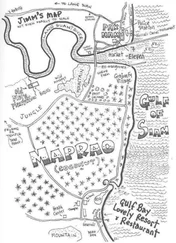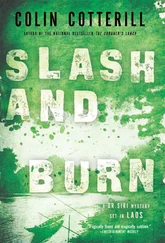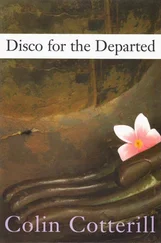Colin Cotterill - Killed at the Whim of a Hat
Здесь есть возможность читать онлайн «Colin Cotterill - Killed at the Whim of a Hat» весь текст электронной книги совершенно бесплатно (целиком полную версию без сокращений). В некоторых случаях можно слушать аудио, скачать через торрент в формате fb2 и присутствует краткое содержание. Жанр: Криминальный детектив, на английском языке. Описание произведения, (предисловие) а так же отзывы посетителей доступны на портале библиотеки ЛибКат.
- Название:Killed at the Whim of a Hat
- Автор:
- Жанр:
- Год:неизвестен
- ISBN:нет данных
- Рейтинг книги:4 / 5. Голосов: 1
-
Избранное:Добавить в избранное
- Отзывы:
-
Ваша оценка:
- 80
- 1
- 2
- 3
- 4
- 5
Killed at the Whim of a Hat: краткое содержание, описание и аннотация
Предлагаем к чтению аннотацию, описание, краткое содержание или предисловие (зависит от того, что написал сам автор книги «Killed at the Whim of a Hat»). Если вы не нашли необходимую информацию о книге — напишите в комментариях, мы постараемся отыскать её.
Killed at the Whim of a Hat — читать онлайн бесплатно полную книгу (весь текст) целиком
Ниже представлен текст книги, разбитый по страницам. Система сохранения места последней прочитанной страницы, позволяет с удобством читать онлайн бесплатно книгу «Killed at the Whim of a Hat», без необходимости каждый раз заново искать на чём Вы остановились. Поставьте закладку, и сможете в любой момент перейти на страницу, на которой закончили чтение.
Интервал:
Закладка:
“Holy…”
It felt as if the office had sucked all the air out of me. My stomach was up somewhere around the fluorescent lights. Until I saw those pictures I’d always believed there couldn’t be a great deal of difference between your basic, six command, non-rechargeable digital camera and anything at the top of the line. Digital was digital. But, I tell you, I was wrong. I was in those pictures between the 3D layers, feeling every horror as if I were the victim. I swear I could hear the flies buzzing and smell the blood. I was mesmerized and horrified all at once by the awful clarity of the photography.
“Arny,” I said, “normally I wouldn’t show you pictures like these but, just in case anything goes wrong, I need you as a witness here. But I warn you, you aren’t going to like them.”
Eight
“ Free societies are hopeful societies. And free societies will be allies against these hateful few who have no conscience, who kill at the whim of a hat.”
— George W. Bush, Washington, D.C., September 17, 2004Of course they’d affected me. How could they not have? All the way back in the truck Arny kept coming back to the fact I had no heart, no normal senses. That my work for the newspaper had turned me into a zombie.
“How could you sit there and look at those pictures without your heart being torn out?” he’d asked.
“It’s work,” I told him.
That’s what I always told myself. It’s work. People get mugged. People get caught. People die. They hadn’t touched your life before the crime. They don’t touch it after. They weren’t friends. You had no investment in them. Perhaps a little grief might leak through when you’re interviewing the loved ones of the deceased. You might shed a tear of sympathy even. But it was the worst day of someone else’s life, not yours. You write up your report in dull, unemotional language. Novelists cry into their keyboards. Reporters count words and watch the clock.
When I first looked at the photos on that previously untainted Home Art computer monitor, I’d been shocked, of course. Here was a murder in progress. A monk poses reluctantly for a photograph. Even by the second snap his hand is raised as if to say ‘enough’. His robes and his pale skin contrast elegantly with the tall bank of bougainvilleas behind him. In the third picture he looks down curiously at a hat that’s being offered to him, presumably by the cameraman. It’s an orange straw hat. A woman’s hat. In the fourth picture he has it in his hands, holding it like an alms bowl in front of him. His expression is one of amused suspicion. The camera is clicking continuously now and the hand of the cameraman is back in the shot. It appears to be gloved in a bright oven-mitt, shocking pink. But held firmly in its grasp is a knife. The blade is slasher-movie long. In some shots the afternoon sun glints off the blade and changes the quality of the photographs. As we step forward with the cameraman we are urging the monk to put on the hat. At first he smiles his incredulity, but as the blade touches his shoulder, he relents. We step back. There is one shot of the hat perched uncomfortably on the monk’s head. Ridiculous. But it’s as if this one shot has been sculpted in color. It’s a frightening but artistic photograph, one which resonates with dread. Time had been taken over it.
And then the knife and the oven mitt re-enter the frames: one, two, three as we approach the abbot. And then the butchery begins. The cameraman and murderer are one and the same. The abbot falls to his knees, stares once at the unseen murderer, turns away as if attempting to crawl through the flower beds, then he is supine across the concrete path. The puddle of blood spreads beneath him and then, as if from out of nowhere, a dog enters the frame. Its eyes are red with rage. Then it’s a blur, halfway out of the picture and there’s a second dog with teeth bared. It fills the frame. It’s about to consume the camera. Then there’s sky. The blur of movement. Then…nothing.
Altogether there were forty-six photos documenting the brutal murder of a peaceful man.
Just work.
The moon was almost full that cloudless night and the squid boats had all stayed home. Those romantic squid were drawn like mindless lovers to the glow of the moon rather than to the deceptive lights of the boats that lured them into their nets and onto their hooks. The moon made the beachscape glow pale gray but clear as day. Despite the absence of color around me, I couldn’t get the damned photographs out of my head. They were still vivid and loud in my mind. Neither could I free myself of the stupid theory that a senior monk had died at the whim of a hat.
I think I mentioned I was halfway through my M.A. at Chiang Mai University when THIS LIFE IS UNAVAILABLE flashed up on my screen. Half an M.A. isn’t really anything, you know? Who’d give you a job on the strength of just an M? The course was one of those money-making schemes the Education Ministry had become so fond of. Learning for rich people. Knowledge by the cubic centimeter. “Need a top-up on that degree, madam?” I didn’t think it would be that long before they had slots you’d have to continuously feed with ten baht coins to keep the lecturer talking.
But, anyway, our course was a weekender. Two days of classes and homework for the weekdays. Most of us were working Monday to Friday so you had twenty mature (said with a straight face) students like me with no social lives getting together at weekends to read out our essays on magical bloody realism in English and being critiqued by our peers. After three years of that, assuming you continued to pay your fees and could fight your way through a final dissertation that neither you nor the lecturers really understood, you ended up with a Master of Arts in Critical English. Stay with me. There is a point to this sidetrack.
One course was called Public Oration and Oral Improvisation. We called it Pooi for short. It was taught by an old ex-playboy Englishman who still thought he had what it took. He flirted a lot and held in his gut for an hour and a half. It must have been a relief for him to get home and breathe normally. At the beginning of the course he allotted everyone a case study. This came in the form of a famous person who gave a lot of speeches. The point was to select one of his or her speeches, or excerpts from several, and analyze the techniques following a style analysis chart handed out by the lecturer. I was envious of my friend, Ning, because she got Bill Gates and he kept his speeches simple to the point of sometimes dropping his audience into a coma. I was lumbered with George W. Bush. I tried to trade him for Condoleezza Rice. I’d always thought if an ethnic girl with the surname Rice could pull herself out of anonymity, we all could. But nobody wanted George, so for six months I studied the oratory skills of the President of the United States of America. And I hadn’t thought it was possible but Condoleezza was way down the if-this-one-can-make-it…inspiration table compared to George W. The poor man really wasn’t a public speaker and I wondered whether he could make real sentences in his private life. But George was a hit and I got an A for that course.
Now, that was a very long way around explaining where I’d heard the phrase ‘killed at the whim of a hat’. George was in Washington, D.C., and he’d fallen off the edge of the teleprompter again and he was caught somewhere between ‘on a whim’ and ‘at the drop of a hat’ and ended up with terrorists killing one another ‘at the whim of a hat.” I’d spent a fortnight trying to work out what it meant. But it was the first phrase that came to mind when I heard about the abbot’s orange hat. For some reason, weird as it may seem, I knew that hat had a bearing on the case.
Читать дальшеИнтервал:
Закладка:
Похожие книги на «Killed at the Whim of a Hat»
Представляем Вашему вниманию похожие книги на «Killed at the Whim of a Hat» списком для выбора. Мы отобрали схожую по названию и смыслу литературу в надежде предоставить читателям больше вариантов отыскать новые, интересные, ещё непрочитанные произведения.
Обсуждение, отзывы о книге «Killed at the Whim of a Hat» и просто собственные мнения читателей. Оставьте ваши комментарии, напишите, что Вы думаете о произведении, его смысле или главных героях. Укажите что конкретно понравилось, а что нет, и почему Вы так считаете.
